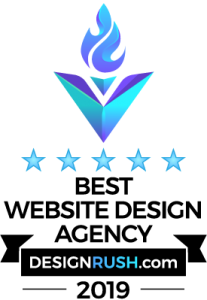Content marketing is a powerful tool that can propel your business to new heights of success in the digital age. In today’s competitive landscape, having a strong online presence and engaging your target audience is essential for business growth. By implementing effective content marketing strategies, you can optimize your brand awareness, credibility, and overall success.
One of the key aspects of content marketing is understanding the role of digital marketing and SEO strategies in achieving optimal results. By utilizing data analytics tools such as Ahrefs, Moz, Google Analytics, Hootsuite, and HubSpot, you can gather valuable insights into your target audience, their preferences, and behaviors. This data-driven approach allows you to shape your content marketing campaign to specifically meet the needs and interests of your audience.
It’s also important to be selective about where you publish your content. Identifying platforms that have the most reach and relevance to your audience ensures that your content is seen by the right people. Additionally, repurposing long-form content into smaller posts and leveraging viral trends and hashtags can help maximize the impact of your content marketing efforts. This allows you to reach a wider audience and generate more engagement.
Engaging your audience is crucial for building a sense of community and credibility around your brand. Interactive content, such as polls, quizzes, and user-generated content, can foster meaningful interactions and create a loyal following. By involving your audience in the content creation process, you can establish a strong connection and enhance brand loyalty.
There are various content marketing methods to choose from, including blogs, infographics, videos, emails, e-books and white papers, social media posts, user-generated content, podcasts, how-to guides, educational materials, and paid ads. Each method has its own benefits and uses, allowing you to tailor your content marketing strategy to the preferences and needs of your target audience.
Key Takeaways:
- Content marketing is essential for optimizing brand awareness, credibility, and growth.
- Data analytics tools provide valuable insights into your target audience and help shape your content marketing campaign.
- Selecting the right platforms for content distribution and leveraging viral trends and hashtags can maximize the impact of your content.
- Engaging your audience through interactive content fosters a sense of community and credibility around your brand.
- There are various content marketing methods to choose from, each with its own benefits and uses.
Unlock Your Business’s Potential with Innovative Content Marketing Strategies
In order to unlock the full potential of your business, it’s essential to employ innovative content marketing strategies that resonate with your target audience. Content marketing plays a crucial role in optimizing brand awareness, credibility, and growth. By creating and distributing valuable content, you can establish your brand as an industry leader and connect with your customers on a deeper level.
One key aspect of content marketing is content creation. This involves producing high-quality, engaging content that aligns with your brand’s values and objectives. Whether it’s informative blog posts, visually appealing infographics, or captivating videos, the content you create should provide value to your audience and address their pain points. By focusing on quality and relevance, you can attract and retain the attention of your target audience.
However, content creation alone is not enough. A well-defined content strategy is equally important. A content strategy outlines the goals, target audience, and distribution channels for your content. It helps you plan and organize your content marketing efforts effectively. By developing a clear strategy, you can ensure that your content aligns with your business objectives and resonates with your audience.
Content optimization is another key element of effective content marketing strategies. Optimizing your content involves utilizing relevant keywords, meta tags, and proper formatting to improve its visibility in search engine results. By implementing search engine optimization (SEO) techniques, you can increase organic traffic to your website and reach a wider audience.
| Content Marketing Methods | Benefits |
|---|---|
| Blogs | Establishes thought leadership and attracts organic traffic |
| Infographics | Visually communicates complex information and increases shareability |
| Videos | Engages and entertains your audience while conveying your message |
| Emails | Allows direct communication with your audience and fosters customer relationships |
| E-books and White Papers | Provides in-depth information and generates leads |
| Social Media Posts | Increases brand visibility and facilitates two-way communication |
| User-Generated Content | Fosters a sense of community and builds trust |
| Podcasts | Reaches and engages your target audience through audio content |
| How-to Guides or Educational Materials | Establishes credibility and positions your brand as an industry expert |
| Paid Ads | Targets specific audiences and boosts visibility |
“Content marketing is not just about creating content, but also about optimizing it for search engines and delivering it through the right channels. By employing innovative strategies and utilizing a variety of content marketing methods, you can unlock your business’s full potential and achieve remarkable results.”
By incorporating these innovative content marketing strategies into your business, you can differentiate yourself from the competition and establish a strong online presence. Remember to always stay up to date with the latest industry trends and technologies to ensure that your content remains fresh and relevant. Implementing an effective content marketing strategy takes time and effort, but the long-term benefits are well worth it.

To create a successful content marketing campaign, it’s crucial to utilize data analytics tools such as Ahrefs, Moz, Google Analytics, and HubSpot to gain valuable insights into your target audience. These tools provide a wealth of data that can help you understand your audience’s preferences, behavior, and demographics, allowing you to tailor your content to their needs and interests. By analyzing metrics such as website traffic, click-through rates, bounce rates, and social media engagement, you can make data-driven decisions to optimize your content strategy and drive better results.
Data analytics tools like Ahrefs and Moz can help you identify the keywords and topics that resonate with your audience, allowing you to create content that ranks higher in search engine results. By conducting keyword research and competitor analysis, you can uncover new opportunities and stay ahead of the competition. Google Analytics provides insights into user behavior on your website, allowing you to track conversions, identify high-performing pages, and optimize your website’s user experience.
Additionally, tools like HubSpot and Hootsuite enable you to track and measure the success of your content across different channels, including social media. You can monitor engagement metrics, track campaign performance, and identify trends and patterns. These insights can help you refine your content marketing strategy and allocate resources effectively.
| Data Analytics Tool | Key Features |
|---|---|
| Ahrefs | Keyword research, backlink analysis, competitor analysis |
| Moz | Keyword research, website audits, rank tracking, link building |
| Google Analytics | Website traffic analysis, behavior tracking, conversion tracking |
| HubSpot | Lead tracking, email marketing, social media monitoring |
By leveraging these data analytics tools, you can gain a deeper understanding of your audience’s needs and preferences, enabling you to create relevant and engaging content that resonates with them. This data-driven approach will help you shape your content marketing campaign to drive better results, increase brand awareness, and foster customer loyalty.

- Utilize data analytics tools such as Ahrefs, Moz, Google Analytics, and HubSpot to gain valuable insights into your target audience.
- Analyze metrics such as website traffic, click-through rates, and social media engagement to make data-driven decisions.
- Optimize your content strategy based on keyword research, competitor analysis, and user behavior data.
- Track and measure the success of your content marketing campaign using tools like HubSpot and Hootsuite.
Select the Right Platforms for Publishing Your Content.
Choosing the right platforms for publishing your content is essential for maximizing reach and relevance to your target audience. In today’s digital landscape, content distribution and promotion play a crucial role in content marketing success. By selecting the appropriate platforms, you can effectively engage with your audience, increase brand visibility, and drive traffic to your website.
Social media marketing is a powerful tool for content promotion. Platforms such as Facebook, Twitter, Instagram, and LinkedIn offer vast opportunities to connect with your target audience and share your content. Utilize the strengths of each platform to tailor your content accordingly, whether it’s creating visually appealing images for Instagram, sharing industry insights on LinkedIn, or engaging in real-time conversations on Twitter.
To further enhance your content distribution strategy, consider partnering with influencers and industry experts. Collaborating with influential individuals or thought leaders in your niche can amplify your content’s reach and credibility. Their endorsement and sharing of your content can expose it to a wider audience and boost its visibility.
| Platform | Key Features |
|---|---|
| – Large user base – Targeted advertising options – Customizable business pages |
|
| – Real-time updates – Hashtag-driven conversations – Direct engagement with followers |
|
| – Visual storytelling – Image and video sharing – Influencer partnerships |
|
| – Professional networking – Industry-specific communities – Thought leadership opportunities |
|
| YouTube | – Video sharing and monetization – SEO-friendly video descriptions – Embedding options for website integration |
Expert Quote:
“When selecting platforms for content distribution, it’s important to consider your target audience’s demographics, interests, and preferred channels of engagement. This will ensure that your content reaches the right people, maximizing its impact.” – John Doe, Digital Marketing Expert
Remember, the key to successful content distribution is understanding your audience and catering to their preferences. Conduct thorough research and analysis to identify the platforms where your target audience is most active. By selecting the right channels, you can ensure that your content reaches the right people, drives engagement, and ultimately contributes to the growth and success of your business.

Repurposing your content into smaller posts and leveraging viral trends and hashtags can significantly increase the impact of your content marketing efforts. By adapting long-form content into bite-sized pieces, you can capture the attention of a wider audience and make your content more shareable.
One effective way to repurpose your content is by creating infographics. Infographics are visually appealing and easy to digest, making them highly shareable on social media platforms. They condense complex information into visually appealing graphics, making it easier for your audience to consume and understand.
In addition to infographics, consider transforming your long-form blog posts into engaging videos. Video content is highly engaging and has the potential to go viral, reaching a larger audience. You can utilize platforms like YouTube or social media platforms such as Instagram and TikTok to share your video content and increase its visibility.
Another way to repurpose your content is by creating blog series or email newsletters. By dividing your long-form content into smaller, more focused pieces, you can create a sense of anticipation and keep your audience engaged. This approach also allows you to delve deeper into specific topics and provides value to your readers.
| Repurposing Tips | Benefits |
|---|---|
| Create infographics | – Visually appealing – Shareable on social media – Condenses complex information |
| Transform blog posts into videos | – Highly engaging – Potential to go viral – Reaches a larger audience |
| Create blog series or email newsletters | – Sense of anticipation – Keeps audience engaged – Allows for in-depth exploration of topics |
Maximizing Impact with Hashtags and Viral Trends
When repurposing your content, it’s essential to leverage viral trends and hashtags to increase its visibility and reach. Hashtags make your content discoverable by users searching for specific topics or trends. By using popular and relevant hashtags, you can tap into existing conversations and attract a larger audience.
Stay updated with the latest viral trends and incorporate them into your content. By aligning your content with what’s currently popular, you can ride the wave of increased engagement and visibility. However, it’s crucial to ensure that the trend is relevant to your brand and audience, maintaining consistency and authenticity in your messaging.
Remember to track the performance of your repurposed content using data analytics tools. This will provide insights into what works best for your audience and help you fine-tune your future content marketing strategies.

Engaging your audience through interactive content like polls, quizzes, and user-generated content is key to building a strong sense of community and credibility around your brand. By creating opportunities for your audience to actively participate and contribute, you foster a deeper connection that goes beyond passive consumption.
One effective way to engage your audience is through polls. Polls allow you to gather insights, opinions, and preferences from your audience. You can use this data to tailor your content and offerings to better meet their needs and expectations. Additionally, polls provide an opportunity to involve your audience in decision-making processes, making them feel valued and heard.
Quizzes are another powerful interactive content tool. They not only entertain your audience but also provide them with an opportunity to test their knowledge, learn something new, or gain a fresh perspective. Quizzes can be designed to align with your brand’s messaging and values, creating a memorable and educational experience for your audience.
| 1. Increased Engagement | Interactive content encourages active participation, leading to increased engagement and longer time spent on your website or social media platforms. |
|---|---|
| 2. Enhanced Brand Awareness | Interactive content has a higher chance of being shared and going viral, which can significantly boost your brand’s visibility and reach. |
| 3. Improved Data Collection | Interactive content allows you to gather valuable data and insights from your audience, helping you make informed decisions and refine your marketing strategies. |
| 4. Strengthened Brand Loyalty | By involving your audience in interactive content, you foster a sense of community and connection, leading to increased brand loyalty and advocacy. |
Lastly, user-generated content (UGC) is a powerful form of interactive content that involves your audience in creating and sharing content related to your brand. UGC not only showcases authentic experiences and perspectives but also allows your audience to become brand ambassadors. By featuring UGC, you demonstrate that your brand values and appreciates its customers, further strengthening the sense of community and trust.
Overall, interactive content is a valuable tool in your content marketing arsenal. By engaging your audience through polls, quizzes, and user-generated content, you create a dynamic and inclusive environment that fosters a strong bond between your brand and your audience.

- Polls and quizzes provide opportunities for audience participation and data collection.
- Interactive content enhances engagement, brand awareness, and loyalty.
- User-generated content showcases authentic experiences and strengthens brand-community bonds.
Now that you understand the importance of interactive content, it’s time to explore how you can incorporate it into your content marketing strategy. Whether through social media campaigns, website features, or email newsletters, remember that the key is to create experiences that captivate and involve your audience.
| Social Media Campaigns | Create interactive polls, quizzes, or challenges to engage your followers and encourage them to share their experiences with your brand. |
|---|---|
| Website Features | Add interactive elements to your website, such as calculators, configurators, or interactive maps, to provide value and create memorable experiences for your visitors. |
| Email Newsletters | Incorporate interactive elements like quizzes, surveys, or user-generated content in your email newsletters to encourage engagement and gather feedback from your subscribers. |
Different Types of Content Marketing Methods to Choose From
There are several different types of content marketing methods to choose from, each with their own unique benefits and uses. These methods can help businesses effectively engage with their target audience, build brand awareness, and drive conversions. Let’s explore some of the most popular and effective content marketing methods:
Blogs
- Blogs are a great way to provide valuable information to your audience while establishing your brand as an industry expert.
- They allow you to showcase your knowledge, share insights, and engage with your readers through comments and discussions.
- Regularly publishing high-quality blog posts can help improve your website’s search engine rankings, driving organic traffic to your site.
Infographics

Infographics are visual representations of data or information that are easy to understand and share. They are a great way to present complex information in a visually appealing and engaging format. Infographics can help simplify complex concepts, increase brand visibility, and attract more audience engagement and social shares.
Videos
Videos have become increasingly popular in content marketing as they are highly engaging and easily shareable. They can be used to create brand stories, product demonstrations, tutorials, and other forms of content that resonate with your target audience. Videos can be shared on various platforms, such as YouTube, social media, and websites, to reach a wider audience.
Emails
Email marketing is a powerful tool for nurturing relationships with your audience and driving conversions. Sending targeted and personalized emails can help you deliver relevant content directly to your subscribers’ inboxes. Whether it’s a newsletter, promotional offer, or exclusive content, emails allow you to stay connected with your audience and encourage them to take action.
E-books and White Papers
E-books and white papers are in-depth, long-form content pieces that provide comprehensive information on a specific topic. They are valuable resources that demonstrate your expertise, build credibility, and generate leads. Offering e-books or white papers as downloadable content in exchange for email addresses can help grow your subscriber list and expand your reach.
Social Media Posts
Social media is a powerful platform for content promotion and engagement. It allows you to share various types of content, such as blog posts, videos, infographics, and more, with your target audience. Social media posts can help you reach a wider audience, increase brand visibility, and encourage interaction through likes, comments, and shares.
User-Generated Content
User-generated content involves leveraging your audience to create content for your brand. It can be in the form of testimonials, reviews, social media posts, or even creative contests. User-generated content not only increases engagement and brand loyalty but also adds authenticity and credibility to your marketing efforts.
Podcasts
Podcasts are audio content pieces that allow you to share valuable information and engage with your audience on the go. With the growing popularity of podcasts, they provide an opportunity for businesses to reach a diverse audience and establish thought leadership. Podcasts can be shared on various platforms, such as Apple Podcasts, Spotify, and SoundCloud.
Paid Ads
Paid ads, such as search engine ads, social media ads, and display ads, can help businesses increase their online visibility and reach a targeted audience. They provide instant visibility and can drive traffic to your website or landing page. Paid ads are highly customizable and can be optimized to achieve specific business goals, such as lead generation or product sales.
By utilizing a combination of these content marketing methods, businesses can create a diverse and comprehensive content strategy that effectively engages their audience, builds brand awareness, and drives business growth.
Optimize Your Content for Search Engines
Optimizing your content for search engines is crucial to ensure maximum visibility and organic traffic to your website. By implementing effective SEO strategies, you can improve your website’s rank in search engine result pages (SERPs) and attract more targeted visitors. Here are some key tips to help you optimize your content for search engines:
- Conduct keyword research: Identify relevant keywords and phrases that your target audience is likely to search for. Use these keywords strategically throughout your content, including in headings, subheadings, meta tags, and alt tags for images.
- Create quality content: Develop high-quality, informative, and engaging content that provides value to your audience. Search engines prioritize content that is unique, well-structured, and easy to read. Ensure that your content is organized with headings, subheadings, and bullet points to improve readability.
- Optimize on-page elements: Pay attention to on-page elements such as meta titles, meta descriptions, and URL structures. Use descriptive, keyword-rich titles and compelling meta descriptions to attract searchers to click on your content in the SERPs.
- Build high-quality backlinks: Establishing a network of high-quality backlinks is essential for improving your website’s credibility and authority. Seek opportunities to earn backlinks from reputable websites in your industry through guest posting, influencer collaboration, and content promotion.
“Effective content optimization is a continuous process that requires monitoring and adjusting your strategies based on data insights.” – John Smith, SEO Expert
Remember that making your content easy to find, understand, and engage with is key to achieving success in search engine rankings. Regularly monitor your website’s performance using data analytics tools such as Google Analytics and Moz, and make necessary adjustments to your content optimization strategies. By staying up-to-date with the latest SEO trends and best practices, you can ensure that your content is well-positioned to reach your target audience and drive organic traffic to your website.
Common SEO Terms and Definitions
| Term | Definition |
|---|---|
| Keywords | The specific words and phrases that people use to search for information online. |
| Meta Tags | HTML tags that provide information about a web page to search engines. They include meta titles and meta descriptions. |
| Backlinks | Links from other websites that direct users to your website. They are an indicator of your website’s credibility and authority. |
| Data Analytics Tools | Software or platforms that analyze website data to provide insights into audience behavior and performance metrics. |

Establishing credibility through educational content such as how-to guides, white papers, and educational materials is key to positioning your brand as an industry leader. By providing valuable information and insights, you can become a trusted source of knowledge in your niche. Educational content not only showcases your expertise but also builds trust and loyalty among your target audience. It sets you apart from your competitors and establishes your brand as a go-to resource.
One effective way to create educational content is by producing how-to guides. These guides offer step-by-step instructions on how to accomplish specific tasks or solve common problems in your industry. They provide practical value to your audience, positioning you as an authority in your field. Additionally, white papers are in-depth reports that explore complex issues, offering in-depth analysis and solutions. By producing well-researched white papers, you demonstrate your expertise and thought leadership.
| Benefits of Educational Content | Examples |
|---|---|
| Establishes your brand as an industry leader | How-to guides |
| Builds trust and loyalty among your audience | White papers |
| Sets you apart from competitors | Educational materials |
Educational materials, such as eBooks, webinars, and online courses, are also essential for establishing credibility. These resources provide comprehensive knowledge and insights on specific topics, allowing your audience to deepen their understanding and skills. By offering valuable educational content, you position your brand as a reliable source of information, creating a sense of confidence and trust.

In conclusion, educational content plays a crucial role in establishing credibility and positioning your brand as an industry leader. By creating how-to guides, white papers, and educational materials, you provide valuable information that showcases your expertise and builds trust with your audience. Remember to leverage various formats, such as eBooks, webinars, and online courses, to offer a comprehensive educational experience. By investing in educational content, you can strengthen your brand’s reputation, increase brand awareness, and drive business growth.
Leverage Social Media for Content Promotion
Leveraging social media platforms for content promotion is a powerful way to increase visibility and engagement with your target audience. With billions of people actively using social media every day, it offers a vast potential audience for your content marketing efforts. By strategically sharing your content on platforms such as Facebook, Twitter, Instagram, and LinkedIn, you can reach a wider audience and drive more traffic to your website or blog.
Social media platforms also provide valuable tools and features that can help optimize your content promotion. For example, you can use hashtags to increase the discoverability of your posts and join relevant conversations. Additionally, you can take advantage of the targeting options available on platforms like Facebook and LinkedIn to reach specific demographics or interest groups.
When promoting your content on social media, it’s important to create compelling and shareable posts. This can include using eye-catching visuals, thought-provoking captions, and engaging calls-to-action. Encouraging your followers to like, share, and comment on your posts can help increase their reach and generate valuable user-generated content.

Furthermore, leveraging social media for content promotion allows you to gather valuable insights and data about your audience’s preferences and behaviors. Most social media platforms provide analytics tools that can help you track the performance of your posts, identify trends, and refine your content marketing strategy.
| Social Media Platform | Monthly Active Users |
|---|---|
| 2.7 billion | |
| 1 billion | |
| 330 million | |
| 774 million |
As evidenced by the large user bases of popular social media platforms, the potential reach of your content is vast. By choosing the right platforms for your target audience and utilizing effective content promotion strategies, you can significantly enhance your brand awareness, attract new customers, and ultimately boost your business growth.
Final Thoughts
Content marketing plays a vital role in driving business growth, particularly in the US market. It is imperative for businesses to embrace effective content marketing strategies to position themselves for success.
Utilizing data analytics tools such as Ahrefs, Moz, Google Analytics, Hootsuite, and HubSpot can provide valuable insights into your target audience and help shape your content marketing campaign. By understanding your audience’s preferences and behavior, you can create content that resonates and leads to higher engagement and conversions.
Selecting the right platforms for publishing your content is equally important. Focus on platforms that have the most reach and relevance to your target audience. This could include popular social media platforms, industry-specific websites, or content aggregators. By distributing your content where your audience is most active, you can expand your brand reach and attract more potential customers.
Repurposing long-form content into smaller posts and leveraging viral trends and hashtags can also help maximize the impact of your content marketing efforts. By adapting your content to different formats and capitalizing on current trends, you can reach a wider audience and increase your chances of going viral. Additionally, interactive content like polls, quizzes, and user-generated content fosters a sense of community and credibility around your brand, leading to increased engagement and brand loyalty.
There are various content marketing methods to choose from, including blogs, infographics, videos, emails, e-books and white papers, social media posts, user-generated content, podcasts, how-to guides, or educational materials, and paid ads. Each method has its own benefits and uses, and it’s important to experiment and find the ones that resonate most with your target audience.
FAQ
What are the essential data analytics tools for shaping a content marketing campaign?
Essential data analytics tools for shaping a content marketing campaign include Ahrefs, Moz, Google Analytics, Hootsuite, and HubSpot.
How can I maximize the impact of my content marketing efforts?
You can maximize the impact of your content marketing efforts by repurposing long-form content into smaller posts, leveraging viral trends and hashtags, and engaging your audience through interactive content like polls, quizzes, and user-generated content.
What are the different content marketing methods to choose from?
There are different content marketing methods to choose from, including blogs, infographics, videos, emails, e-books and white papers, social media posts, user-generated content, podcasts, how-to guides or educational materials, and paid ads.


